Musty smells, even in the most perfect maintained areas, can make them feel and look bad and uninviting. Whether it is a damp basement, a closet with no air, or a whole room of moisture, these smells often indicate that humidity is a problem that needs attention. So, does a dehumidifier really eliminate such persistent odors?
This article will examine the role of excess moisture in the formation of musty smells, the method by which a dehumidifier operates to deal with the issue, and other measures you can perform to rid yourself of odors permanently. If you have been fighting with the problem of dampness for a while and want practical methods to get rid of it, then you have come to the right place!
Understanding the Role of a Dehumidifier
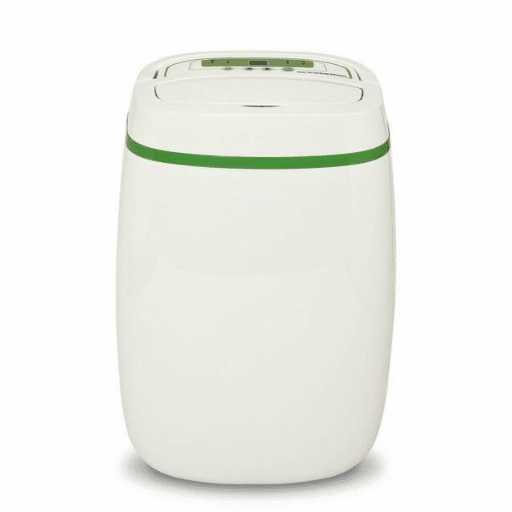
Not to be overlooked, a dehumidifier is very important in taking care of the air that has too much moisture; and this moisture can cause unpleasant smells and set up a situation favorable for mold and mildew growth. The end result is an ideal humidity level which is usually suggested to be in the range of 30% to 50%.
Key Benefits:
- Eliminates main sources of bad smells in the house
- Improves indoor air quality significantly
- Prevents damage to furniture, walls, and floors
- Creates a healthier living environment
How a Dehumidifier Works
A dehumidifier works by sucking in humid air from the ambient environment and directing it over refrigerated coils. As the coils cool the air, the water vapor condenses into tiny droplets and is either collected in a tank or drained away through a hose. The air, now with a lower humidity level, is slightly heated and then blown back into the room, thus creating a major humidity reduction.
Modern Dehumidifier Features:
- Sophisticated Sensors: Automatic humidity level detection and control
- Energy-Efficient Designs: Minimize power consumption
- Air Filter Systems: Help clean and purify the air
- Smart Controls: Programmable settings for optimal performance
Types of Dehumidifiers
| Type | How It Works | Best For | Key Advantages |
|---|---|---|---|
| Refrigerant (Compressor-based) | Cools air to extract moisture | Hot and humid conditions, basements, tropical regions | Highly effective, most popular type |
| Desiccant Dehumidifiers | Uses moisture-absorbing substance | Cold regions, low temperature areas | Quieter operation, works in cold conditions |
| Thermo-Electric (Peltier) | Thermoelectric cooling | Small spaces: bathrooms, closets, offices | Compact, space-saving, energy-efficient |
| Whole-House Dehumidifiers | Integrates with HVAC system | Large areas, entire homes | Comprehensive coverage, efficient control |
| Portable Dehumidifiers | Standalone, movable units | Rental accommodations, flexible needs | Versatile, room-to-room mobility |
Choosing the Right Dehumidifier
Choosing a dehumidifier involves taking into consideration a number of factors, such as the size of the area, the humidity level, and particular requirements like energy efficiency or portability.
Selection Criteria:
- Room Size: Small areas (bathrooms, closets) need compact units; large areas (basements, living rooms) require higher capacity
- Capacity: Measured in pints of moisture removed per day
- Energy Efficiency: Look for Energy Star certified models
- Features: Built-in humidistats, automatic shut-off, continuous drainage
- Portability: Consider if you need to move the unit between rooms
- Budget: Compare prices, read reviews, and check specifications
Common Causes of Musty Smell in Indoor Spaces
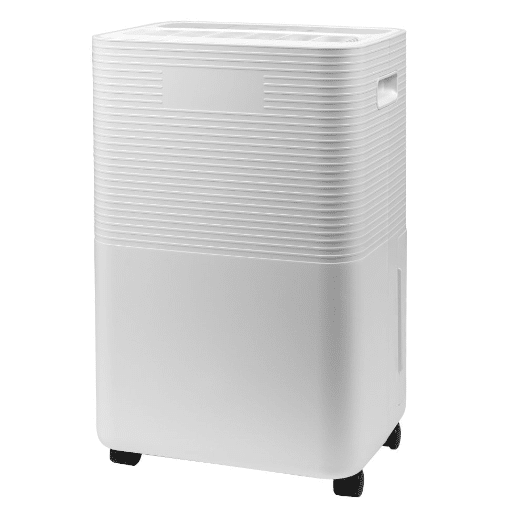
Airing out musty odors is usually a trial and error process that involves identifying the sources and removing them. The category of heavy-duty sources includes flushing and leaking water from roofs, walls, and plumbing systems.
Sources of Humidity
There are many potential sources for indoor humidity, and it is essential to know them to control the musty smell and also to avoid mold growth.
| Source Category | Specific Sources | Impact |
|---|---|---|
| Daily Activities | Cooking, showering, drying clothes indoors | Releases water vapor into the air |
| Structural Issues | Roof leaks, wall leaks, basement seepage | Introduces moisture directly into home |
| Poor Ventilation | Lack of air circulation, closed spaces | Traps humid air, promotes mold growth |
| External Factors | High outdoor humidity, rainy seasons | Moisture enters through windows and doors |
| Hidden Sources | Behind furniture, crawl spaces, HVAC systems | Silent mold development |
| Organic Materials | Wet carpets, stored clothes, books | Absorb and retain moisture over time |
⚠️ Seasonal Alert:
Searches for terms like “how to remove musty odor” and “prevent mold and mildew indoors” spike during humid seasons. Be proactive with maintenance, leak repairs, dehumidification, and better ventilation before problems occur.
Impact of Poor Ventilation
The indoor environments and human health can be greatly impacted by poor ventilation. Such situations usually cause to the increase of moisture which is the main reason for mold, dust mites and other allergens to appear.
Health Impacts:
- Respiratory Problems: Worsened asthma and allergies
- Indoor Pollutants: Accumulation of CO2, VOCs, and toxic substances
- Poor Air Quality: Unsatisfactory breathing environment
- Allergen Growth: Increased dust mites and mold spores
Solutions:
- Install exhaust fans in moisture-prone areas
- Open windows when safe and weather permits
- Ensure HVAC systems are working optimally
- Regular air circulation throughout the home
Mold and Mildew Growth
Mold and mildew feel at home in wet and low-ventilated indoor areas. They not only occupy space but also pose serious health risks like allergies and breathing problems.
Effective Prevention Strategies:
- Humidity Control: Maintain levels between 30-50%
- Use Dehumidifiers: Especially in high-moisture areas
- Quick Leak Repairs: Address water issues immediately
- Regular Cleaning: Focus on moisture-prone areas
- Consistent Maintenance: The only way to prevent mold presence
Can a Dehumidifier Remove Smells?
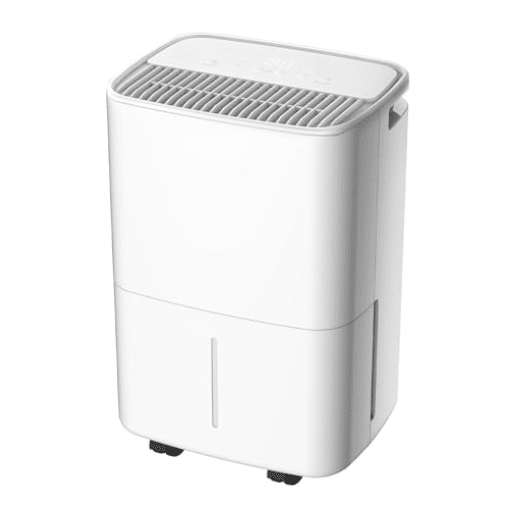
Absolutely, a dehumidifier can be beneficial in getting rid of smells, especially those that come from high humidity in the air. The working principle of dehydrators involves bringing down the humidity level to that extent where mold, mildew, and bacteria growth—among other unpleasant smell producers—are less likely to occur.
✓ What Dehumidifiers CAN Do:
- Significantly reduce moisture-related odors
- Prevent new mold and mildew growth
- Improve overall air quality
- Create less favorable conditions for bacteria
⚠️ Limitations:
Dehumidifiers may not completely erase scents coming from existing mold, mildew, or odors that are not moisture-related. Best results come from using them along with cleaning practices that target problem areas and proper ventilation as part of a holistic odor management strategy.
Effectiveness Against Musty Smells
Dehumidifiers are indeed a very effective method to get rid of the musty smell especially when eliminating the excess humidity is one of the reasons. However, they are not the ultimate solution as there is a need for other preventive actions as well.
Comprehensive Approach:
- Run Dehumidifier: Reduce moisture levels consistently
- Deep Clean: Thoroughly clean affected areas
- Improve Ventilation: Keep air circulating properly
- Fix Structural Issues: Address leaks and condensation
- Monitor Results: Track humidity levels regularly
Comparison with Other Odor Removal Methods
| Method | How It Works | Effectiveness | Pros | Cons |
|---|---|---|---|---|
| Air Fresheners & Candles | Masks odors with fragrance | Temporary only | Quick, pleasant scent | Doesn’t address root cause |
| Chemical Sprays | Surface-level odor masking | Short-term | Immediate effect | Harsh chemicals, health concerns |
| Activated Charcoal | Absorbs odors naturally | Moderate | Natural, eco-friendly, affordable | Limited coverage area |
| Baking Soda | Absorbs and neutralizes odors | Moderate | Cheap, safe, natural | Small-scale application |
| Dehumidifiers | Removes moisture at source | High (long-term) | Addresses root cause, wide coverage | Requires electricity, initial investment |
Testimonials and Case Studies
Sarah’s Experience with Dehumidifiers
“I was having a hard time getting rid of the disgusting smell in my basement; hence, I chose to buy a dehumidifier with high-efficiency. The smell not only disappeared but also the air quality turned out to be very good in just a few weeks. The cleaning once a week and good ventilation have made the results really good for me.”
— Sarah, Phoenix Homeowner
Case Study: Office Space Transformation
Poor air quality and odors at the office were a major concern for a small IT company which was using an old HVAC system that caused constant humidity.
The Solution:
- Installed modern dehumidifier
- Promoted desk cleanliness among employees
- Improved ventilation system
Results:
- 40% reduction in air quality complaints within 3 months
- Significant improvement in employee comfort
- Reduced humidity-related issues
Market Trend: Search engine trends show a 25% increase in queries for “best dehumidifier for office use,” indicating growing recognition of their benefits in work environments.
Practical Tips for Using a Dehumidifier
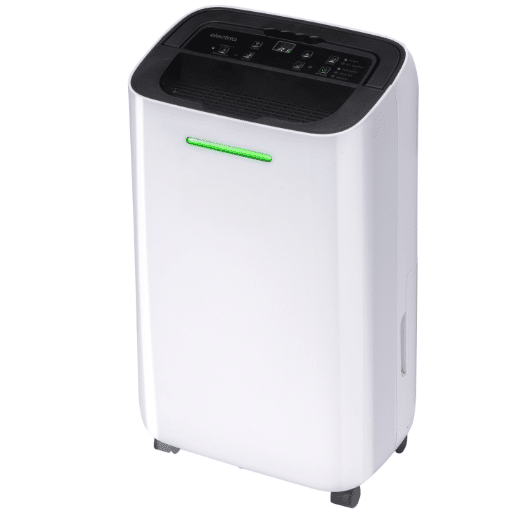
The use of a dehumidifier can be very beneficial, but it relies on effective usage. To begin with, the device should be situated in the humid places like bathrooms, cellars, or around windows where water condensation is common.
Optimal Settings and Placement
Recommended Humidity Range: 30% to 50%
This range ensures comfortable and healthy indoor air quality.
Placement Guidelines:
- Central Position: Place in middle of room for optimal air circulation
- Unrestricted Airflow: Keep at least 30cm clearance on all sides
- Away from Walls: Don’t position too close to obstructions
- Multiple Units: Consider for large offices, especially in damp areas like basements or storerooms
Maintenance Tips for Efficient Performance
1. Keep the Filters Clean
Frequency: Once a month
Why: Dirty filters can cause 30% performance degradation
Action: Remove, clean, and replace filters regularly
2. Examine and Drain the Tank
Frequency: Daily in high humidity conditions
Why: Overflowing tanks can damage the unit
Action: Check water levels; empty before full; consider auto-drain models
3. Install It Correctly
Location: Central parts of the room
Clearance: Minimum 30cm on all sides
Action: Position away from walls and furniture for optimal air intake/exhaust
4. Notice Frost On The Coils
When: During winter months
Why: Ice buildup hinders operation
Action: Switch off unit and allow several hours for ice to melt
5. Plan Service Once a Year
Frequency: Annual professional maintenance
Components Checked: Compressors, fan motors, electrical systems
Benefit: Extends appliance lifespan and ensures optimal performance
Combining Dehumidifiers with Other Odor Removal Strategies
To achieve the greatest success in ensuring a comfortable interior environment, it is sometimes necessary to combine several techniques that would be much more effective than a simple dehumidifier.
| Strategy | Method | Works With Dehumidifier | Best For |
|---|---|---|---|
| Activated Charcoal | Place in problem areas to absorb odors | ✓ Complements humidity control | Closets, small rooms, storage |
| Baking Soda | Sprinkle in carpets, place in containers | ✓ Neutralizes residual odors | Carpets, refrigerators, shoes |
| Proper Ventilation | Open windows, use exhaust fans | ✓ Essential companion | All spaces, especially after cooking |
| Air Purifiers | HEPA filters remove airborne particles | ✓ Perfect combination | Whole home, allergy sufferers |
| Regular Cleaning | Deep clean surfaces and fabrics | ✓ Addresses existing odor sources | All areas, ongoing maintenance |
Optimal Combination Strategy:
- Dehumidifier: Controls moisture and prevents new mold
- Air Purifier: Removes dust, pollen, pet dander, mold spores
- Natural Absorbers: Activated charcoal and baking soda for residual odors
- Ventilation: Fresh air circulation
- Regular Cleaning: Prevents buildup
Result: Better, healthier, fresh and comfortable environment
Conclusion: Recommendations for a Fresh Indoor Environment
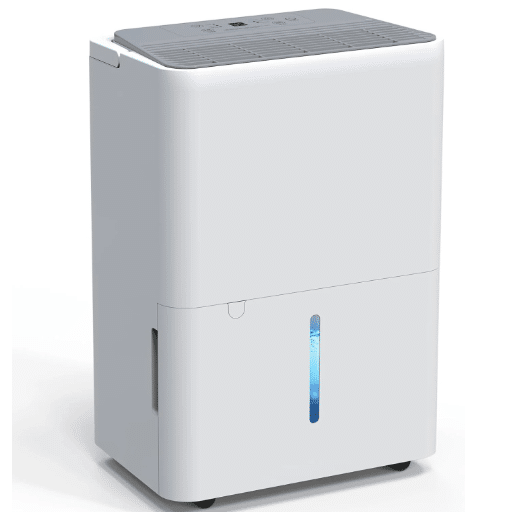
In order to keep a room smelling fresh and clean, combining a few sensible measures and science can be extremely helpful.
Essential Techniques for Fresh Air:
- Periodic Home Cleaning: Regular decluttering and surface wiping
- Sufficient Air Circulation: Open windows and use fans strategically
- Air Cleaning Appliances: Dehumidifiers and air purifiers
- House Plants: Peace lilies and snake plants naturally freshen air
- Preventive Maintenance: Address moisture issues before they become problems
Final Thoughts on Dehumidifiers
Dehumidifiers are indispensable devices when it comes to keeping indoor air clean and fresh. According to Google search data, recently, the number of people interested in dehumidifiers has risen, indicating rising popularity about these devices and also whether they are good or caused any threats.
Are Dehumidifiers Worth the Cost?
Answer: A Bold Affirmative!
For all homes experiencing elevated moisture levels and molds supporting fusty odours, dehumidifiers are absolutely worth the investment.
Long-Term Benefits:
- Easy humidity control and deflection
- Promotes clean air by decreasing allergens
- Prevents structural damage from moisture
- Reduces health risks from mold and mildew
- Enhances overall comfort and well-being
When to Seek Professional Help
There are circumstances when getting the assistance of experts is important – like when the problems do not go away even after using dehumidifiers and aerating the space well.
⚠️ Signs You Need Professional Help:
- Deep-Seated Mold Formation: Extensive mold growth that cleaning can’t remove
- Heavy Leakage: Persistent water intrusion issues
- High Indoor Humidity: Humidity that won’t decrease despite dehumidifier use
- Structural Damage: Visible water damage to walls, ceilings, or floors
- Health Symptoms: Respiratory problems or allergies that don’t improve
What Professionals Can Do:
- Assess and rectify structural issues
- Waterproofing solutions
- Repair insulation defects
- Suggest effective prevention strategies
- Provide indoor environmental health consultations
Additional Resources for Maintaining Air Quality
Consider Using Quality Air Purifiers
HEPA filter air purifiers can successfully eliminate traditional air pollutants such as dust, pollen and mold spores, working in tandem with dehumidifiers for optimal air quality.
Assess the Quality of the Indoor Air
Invest in sophisticated air quality monitoring equipment. Devices such as Awair and Airthings can offer immediate information on indoor pollutants and moisture content to help mitigate danger.
Increase Air Flow
Air quality can be managed with ventilation. Open the windows often, or at least use an exhaust fan where possible activities like cooking take place.
Make Sure You Do the Maintenance Work on a Regular Basis
- Air Filters: Change air conditioning filters every 2 to 3 months to maintain effective filtration
- HVAC Cleaning: Dust and dirt can accumulate in heating or cooling systems – clean them annually
Mitigate Household Pollutants
- Eco-Friendly Cleaners: Switch to biodegradable cleaning products that do not release harmful chemicals
- No Indoor Smoking: Smoking inside the house affects air quality inside significantly
Make Use of Reliable Network Resources
- Environmental Protection Agency (EPA): Offers measures for pollution prevention and preparation
- AirNow.gov: Provides access to maps, charts, and information on air pollution levels in different regions
- Indoor Air Quality Resources: Government and health organization guidelines
References
-
“Air Filters, Dehumidifiers, and Humidifiers” – Explains how dehumidifiers reduce moisture, curbing mold growth and improving air quality.
-
“The Facts – On Indoor Air Quality” – Discusses the role of dehumidifiers in addressing humidity-related odor issues.
-
“The Effects of Humidity on an HVAC System” – Highlights how high humidity can lead to musty smells and how dehumidifiers can help.
Frequently Asked Questions (FAQ)
What role does a dehumidifier play in eliminating musty odors?
A dehumidifier works to get rid of dampness in the air which is known as the major and underlying cause of any musty odor. The presence of moisture leads to excessive humidity which supports the growth of mold and mildew which then results in a musty odor. So, by quite simply running a dehumidifier from time to time, many odors can be prevented from taking root in that area.
Natural questions: Will a dehumidifier contain the horrible smells in the home?
Yes, a dehumidifier would be able to counteract the unpleasant odors in your apartment. A dehumidifier, by design, works efficiently to keep dampness levels low; hence, curbing down the growth of molds and mildews; the main musty odor offenders. This comes in handy especially in the places where high concentration of humidity prevails for instance the basement or the shower rooms.
Apart from pet allergy odor neutralizes, will a dehumidifier help with smell is emanating from dirty dog waste?
Managing the effected spaces of pet odour with the aid of a dehumidifier may be possible due to ensuring some level of moisture content as high humidity invokes the odour to linger. The higher the humidity, the more the smell of animal fur and other related tissues is accentuated. A dehumidifier however, is able to assist in controlling such smells by keeping the air drier, and thus discomfort to the nose.
How fast can the smell be eliminated by a dehumidifier?
What is the duration of elimination of smells with aid of dehumidifiers? Overation of the group can change due to olfaction, margins denoting closed cells, and new cells along rising edges. If the dehumidifying machine is left on for each particular amount of time the removal of the odor will be the most effective.
Can one expect any help of running dehumidifier to eliminate musty smells of garage?
When your garage begins your reek, it is one of the best ideas to plug in a dehumidifier. This is because garages are hardly ever well aerated and moisture piles up, making them exceedingly moldy over time even as odors themselves increase. The dehumidifier will come in handy as it will be possible to lower the levels of moisture that make the situation quite unbearable.
How do one detect the need for a dehumidifier to ameliorate odor?
The need for a dehumidifier is indicated where there is a chronic problem of unpleasant dampness, that is bad odors and molds in the environment, roof and walls and some objects. If there are dark stains on the walls and or ceilings and the smells get to your nose after they can not be gotten rid of physically, this is a blatant tell that dehumidifiers and boxing will be beneficial.
Will a dehumidifier help with smell coming out water stained areas?
Certainly, when dealing with water gain any particular area, a dehumidifier might actually help. Whenever there is a water leak or water accumulation within a flooded area, exposed materials would stink since they are likely to retain some of that liquid. Emphasis is brought to the use of a dehumidifier to fasten the drying procedure and decrease the odors in the household interior.
Can I do without a dehumidifier in humid weather ?
It is risky to avoid using a dehumidifier in humid weather, high humidity poses adverse effects for instance promotes the formation of molds and mildews which in turn affects the respiratory function and causes allergies. Not only do high levels of humidity corrode upholstery but other materials in households as well. A dehumidifier will be an excellent addition to your health and belongings safety measures by applying it constantly.



